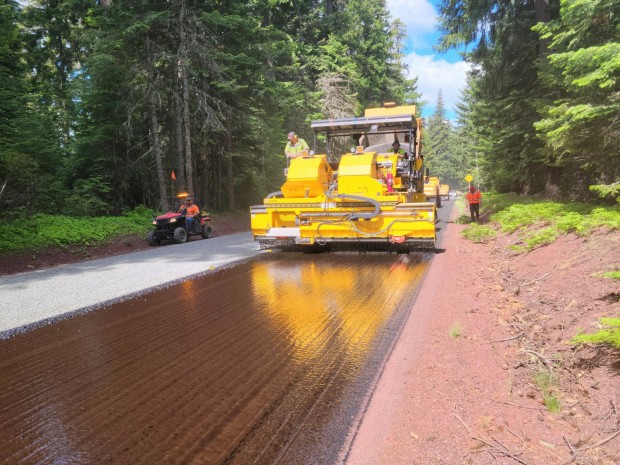Constructing durable roadways requires careful consideration of the building materials used. These materials guarantee the durability and strength of thoroughfares, roads, and highways.
Explore how durable roadways are made and discover these essential construction materials for constructing long-lasting roads, emphasizing their characteristics, applications, and advantages.

(Photo : Pexels/Tom Shamberger )
How are Roadways Constructed?
Using a piece of asphalt paving machinery known as a paver, the road workers set the material down on the road. The materials are transported from a truck to the paver, which an operator operates. The paver then places the materials on the road. It is then compacted, reinforced, and vehicle-ready using heavy-duty rollers.
As mentioned, choosing the appropriate subgrade, or the surface upon which to lay pavement, is the first step engineers take to create a sturdy and long-lasting road. Nevertheless, more subgrade strength may result in road failure and cracking despite using high-quality pavement materials.
Road construction begins with the subgrade being compacted with rollers. Immediately after compacting the subgrade, the stone aggregates are deposited on top of it and then compacted further. The asphalt layers are supported by a solid foundation provided by this aggregate base on the subgrade. However, the road can crack, rut, and fail if the people who construct it do not utilize the appropriate materials, put them together correctly, or design the pavement structure to accommodate the anticipated traffic.
Also Read: Unlocking Affordable Housing Through Adaptive Reuse of Abandoned Buildings
Essential Building Materials for Constructing Durable Roadways
Soil
Predominantly composed of soil, low-cost village roadways with light traffic require soil for the pavement and subgrade. In contrast, soil is the primary material utilized for the construction of dams when highways are constructed on an embankment at the desired level. Moreover, since structures will inevitably be supported by transfer loads to the ground, sediment and rock are utilized as foundation materials.
Aggregate
Granular foundations, sub-foundations, bituminous mixtures, and cement concrete all require aggregates for their construction. In addition, they are the building blocks of a water-bound macadam road, which is quite economical. Thus, the most essential component of materials used in the construction of roads is stone aggregate, also commonly referred to as mineral aggregate. This material's formation involves fracturing naturally occurring rocks into coarse aggregates, gravel, or fine aggregate sand.
Concrete
One of the reasons why it is used is its extraordinary endurance, which allows it to consistently preserve the structural integrity of buildings and other constructions even after years of frequent use and abuse. It is utilized primarily when constructing roads since it allows for a longer service life and a low maintenance cost. Additionally, by enhancing the load-bearing capacity of pre-existing pavement strata, concrete reduces construction expenses.
Asphalt
Considering its complete recyclability, asphalt is among road construction's most frequently employed materials. Most construction companies make it a priority to recycle all of the asphalt collected from a building site. In addition to being beneficial to the environment, this also results in more durable roads. Accordingly, recycled asphalt mixtures exhibit superior strength, durability, and resistance to rutting compared to new asphalt mixes. It is also economical and effective at reducing road pollution, and its constituent materials are readily available.
Related Article: 8 Best Types of Gravel That You Should Consider For Your Driveway Transformation







